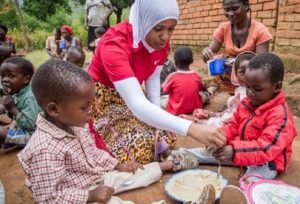May 18, 2021
Analysis of implementation costs of a nutrition intervention in Malawi childcare centers published in Food and Nutrition Bulletin
 Women, infants, and children need the right quantity and diversity of nutritious foods to support healthy growth and development and to prevent an intergenerational cycle of malnutrition. Meeting this complex need requires coordinated efforts across sectors; however, there is a wide information gap on costs and cost-effectiveness of implementing nutrition intervention strategies that combine agriculture, health, and nutrition components.
Women, infants, and children need the right quantity and diversity of nutritious foods to support healthy growth and development and to prevent an intergenerational cycle of malnutrition. Meeting this complex need requires coordinated efforts across sectors; however, there is a wide information gap on costs and cost-effectiveness of implementing nutrition intervention strategies that combine agriculture, health, and nutrition components.
As part of the Strengthening Economic Evaluations for Multisectoral Strategies for Nutrition (SEEMS-Nutrition) initiative aimed to fill this gap, Dr. Carol Levin (Clinical Associate Professor, Global Health) and researchers at the International Food Policy Research Institute (IFPRI) examined the costs and benefits of an integrated nutrition and agriculture intervention designed to improve the nutritional quality of meals provided through Malawi’s community-based childcare centers (CBCCs)—finding its estimated benefits (assessed as part of a related impact analysis) outweighed the intervention costs.
A detailed study on the costs of the program is summarized in a new publication titled, “When Communities Pull Their Weight: The Economic Costs of an Integrated Agriculture and Nutrition Home-Grown Preschool Meal Intervention in Malawi,” in Food and Nutrition Bulletin. The annual economic cost of the program ranged from US$160 per preschool child to US$41 per beneficiary, with community contributions of food and volunteer time accounting for 25% of total costs.
This evidence offered is helpful for policymakers and program implementers to understand the costs of scaling up multisectoral approaches to improve nutrition and educational outcomes. Click here to read the full publication.